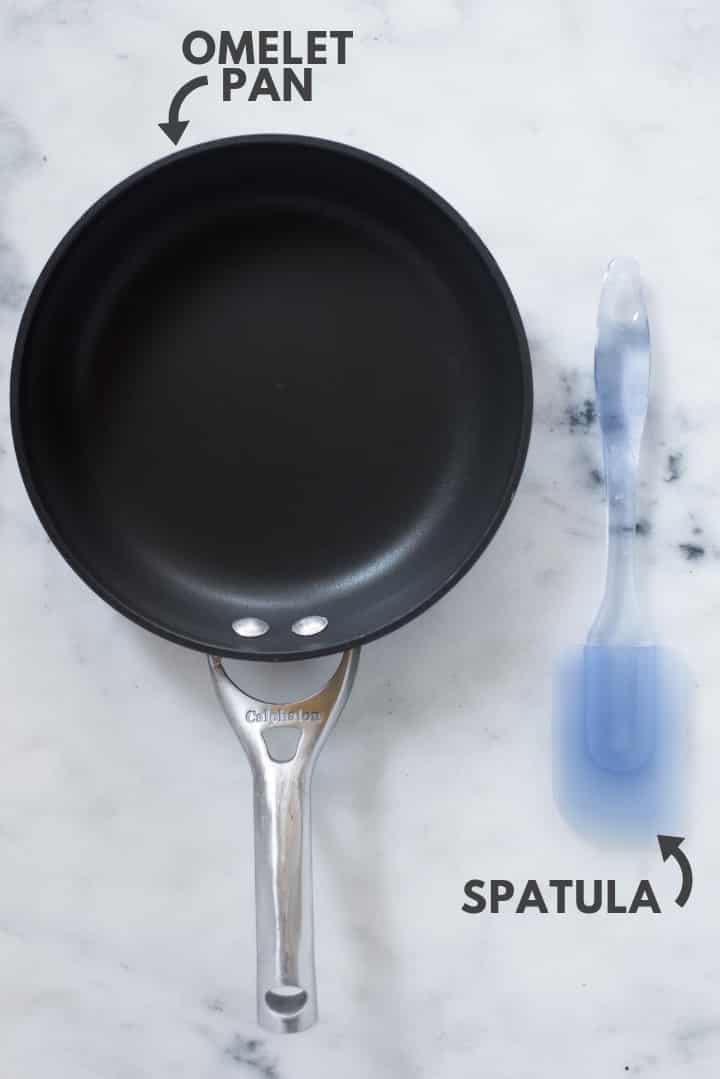Omelets are delicious and perfect for breakfast, brunch, lunch, and dinner. Learn how to make the best omelets that are fluffy, healthy, and oh so yummy. Step-by-step s included to walk you through the process!
I love them for breakfast, lunch or dinner. Not only are they super yummy, but they are also quite healthy. You can pack a ton of protein, fiber, calcium, and other nutrients into these fluffy pillows of goodness without even hardly trying.
I used to have this issue with omelets that they turned out to be more like scrambled eggs than omelets. Then, with Dustin’s help, I have learned the correct ratio of meat to egg to veggie in order to achieve fluffy omelet perfection.
Dustin’s good like that – he makes a mean scrambled eggs, too. Learn more about that here.
And, today, I have to share his tips for how to make the best omelets with you.
When eating out, lots of restaurants make omelets by creating an almost crepe-like egg mixture and then wrapping that around all the omelet innards. There must be people who enjoy their omelets like that, but I am certainly not one of them. Instead, I like the omelet innards (meat and veggies) to be mixed in with the eggs. That way, the omelet is fluffier, tastier and, in my opinion, better.
And, if you are like me, you are in the right place! It’s really easy to learn how to make fluffy omelet.
We love omelets for dinner around here. We make them with some toast and roasted potatoes. Or just by themselves to save the calories on the extra carbs.
For this recipe, I used ham, spinach, mushroom, and cheddar cheese, but these ingredients can easily be substituted for your favorite fillings. If you’d like to use thick-cut ham, we ask the person at the deli to cut us extra thick ham just as you would lunch meat. And we get the low sodium, no sugar added ham and it’s delicious.
Many people add either milk or cream to their omelettes in order to bulk them out and have a more substantial dish without the need to add an extra egg. While this does work, it’s crucial not to go overboard or you’ll end up with a mixture that’s too loose.
/perfect-quick-omlet-tips-995517_Step_6-5ba022624cedfd002597f8ab.jpg)
WHAT GOES IN AN OMELET?
The short answer is everything you like.
But, if you’re not sure what to use, try just a little cheese. Any type of cheese, really. Cheddar and Gruyere are great for omelets. But blue cheese is also an option if you want to make your omelet fancier. Ive never been a huge fan of blue cheese, but I know many love it.
Wondering whether you should add milk or sour cream or greek yogurt to your omelet to make it better? My answer is NOPE, but more on that later.
If you want to keep your omelet vegetarian, you can add:
- mushrooms
- tomatoes
- fresh herbs
- bell peppers
- onions
- green onions
- spinach
- asparagus
- broccoli
For meats that can be added to your omelet, I like to add any of the following:
Just be sure the meat is cooked through before you add it to the omelet so its safe to eat.

HOW TO FLIP AN OMELET WITHOUT BREAKING IT
Flipping the omelet – this is the most intimidating step. And the step that makes people stay away from homemade omelets.
But, really, it’s not hard to learn how to flip an omelet without breaking it.
And, if you fail, you can try again until you make it. Cooking should be fun so don’t be afraid to mess up. No one will know and your omelet will still taste super yummy, even if its not perfectly flipped.
Basic Tip: If you want to avoid the mess, make sure the omelet won’t stick to the pan.
How to make your omelet not stick to the pan?
Use a nonstick omelet pan. The pan should be about the same size as the omelet youre wanting to make – the smaller, the better to keep everything nice and cuddled up. Also, make sure the pan is hot when you pour the eggs. If you don’t have a nonstick pan or you are too afraid to try, add olive oil to coat.
Let the eggs cook for a minute or so or until the edges are brown and hold together. Separate the edges from the pan. Then, with a flexible silicone spatula, gently move the uncooked eggs from the middle towards the edges. Repeat the process until the omelet is almost done in the middle.

Now the flipping part. First of all, shake the pan to make sure the bottom of the omelet is not stuck to the pan. If it sticks here, it will most certainly stick when you try to flip it.
You can flip the omelet like you flip pancakes or crepes by shoving the pan forward and upward.
If this is too intimidating, you can use a plate. Place the plate close to the pan and slide the omelet onto it. Then cover the plate with your pan and flip the pan to move the omelet from the plate to the pan.
You can also use a big spatula to flip the omelet. You’ll have to be very fast otherwise you will break the omelet.

Milk Egg Omelette Recipe | Eggs With Milk | Simple & Quick Breakfast Recipes
FAQ
Should you add milk to an omelette?
How do restaurants make omelets so fluffy?
Is it good to eat omelette with milk?
What is the trick to a perfect omelette?
Should you add milk to eggs when making omelettes?
Adding milk to eggs when making omelettes is a technique used by many people. The science behind this method lies in the protein structure of the eggs. By adding milk, the proteins coagulate more slowly, resulting in a tender, delicate texture. Furthermore, the milk adds moisture and creaminess to the eggs, which many people find appealing.
Is it safe to eat omelet if one has diabetes?
Yes, eggs are low in carbohydrates and low on the glycemic index, which makes them suitable for diabetics. They are also a source of protein, vitamins and minerals and have many health benefits.
Can you use different types of milk in omelettes?
Experimenting with different types of milk in omelettes can be an enjoyable and exciting process. Depending on the type of milk used, the omelette can take on entirely different textures and flavors. Many people use whole milk in their omelettes for a creamier texture, but others opt for skim milk to create a lighter omelette.
Why do you add milk to omelettes?
The primary purpose of adding milk to an omelette is to make it richer and more tender. Milk is known to help in breaking down the proteins in eggs, creating a softer texture in the final dish. It also adds moisture to the omelette, preventing it from drying out when cooking. However, the use of milk in omelettes is a personal preference.
